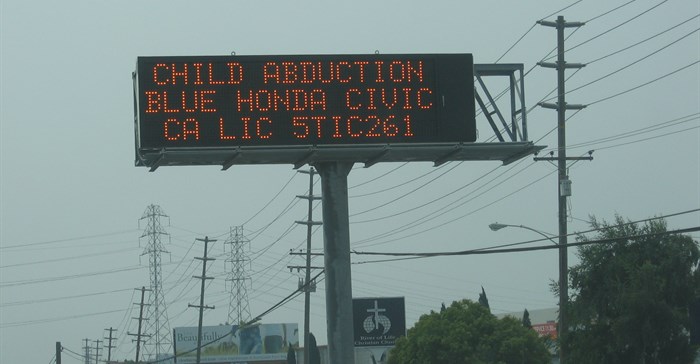For the past two years, the City of Cape Town has used a substantial number of Primedia Outdoor's billboards and bus shelters to highlight the problems around drug abuse (20 billboards and 250 shelters in 2014; followed by 22 billboards and 112 bus shelters in 2015); a campaign that has just rolled out once again in 2016.
Using out-of-home (OOH) formats to tackle social issues is not uncommon; in fact, around the world, they are being used to make the world a better place, one billboard at a time – and in some startlingly innovative ways, as Primedia Outdoor recently discovered.
Clean, green and keen to be seen
In 2014, Peru’s University of Engineering and Technology (UTEC) created a billboard that cleans the air, allegedly doing the work of 1,200 trees. The billboard was installed in a particularly polluted area in Lima, Peru, where it is claimed to have “filtered around 500,000 cubic meters of air within one week in March, scrubbing it free of 99 percent of its airborne bacteria”, according to Gizmag.com.
Prior to this, UTEC made waves when it developed a billboard able to produce drinking water by “grabbing moisture from the desert air” (Lima, although short or rainfall, is apparently high on humidity, which the billboard is able to distil). This produced some 96 litres of clean water a day for local consumption.
In a similar vein, Japanese beauty brand Shokubutsu Hana and TBWA\SMP partnered with the Pasig River Rehabilitation Commission and Vetiver Farms Philippines to create a 27m-long floating “billboard” made of vetiver, a grass used to absorb toxins. This was floated in the Pasig River in Manila, a river declared biologically dead in the 1990s, due to industrial runoff and sewage. According to Adweek.com, the billboard can clean up to 8,000 gallons of water a day.
And in Los Angeles, sculptor Stephen Glassman has turned decommissioned billboards into hanging bamboo gardens. With his latest project, Urban Air, he intends to replace traditional advertising with living bamboo in metal billboard scaffolding, so as to “put a crack in the urban skyline so that when people are compressed, squeezed, stuck in traffic and they look up, they see an open space of fresh air," he says. Each installation is Wi-Fi-enabled, collects local climate data including temperature and air quality, and like any garden, does its bit to clean and oxygenate the air.
Zapping the Zika virus
In Brazil, the escalation of the Zika virus to epidemic status in mid-2016 signals a disaster in more ways than one, with the 2016 Summer Olympics just around the corner. Outdoor panels using lactic acid and carbon dioxide to emulate human sweat and breath have been designed to attract mosquitoes – allegedly from up to 2.5miles away – and then kill them. These boards have been installed in areas affected by outbreaks of Zika and dengue.
Designed by Brazilian advertising agency NBS and OOH agency Posterscope, both part of Dentsu Aegis Network, the technology is available for free online at mosquitokillerbillboard.com.
Shake it off
Digital billboards can serve as an effective tool in disaster preparation and management. In April 2016, OOH operator, Clear Channel Outdoor, used their digital screens to warn viewers about potential earthquakes. These screens displayed tips on preparing for an earthquake depending on its magnitude, as well as advising what to do during and after an earthquake. The screens also highlighted “hotspots” – areas that will experience a magnitude of 6.7 or higher within the next 30 years.
“Calling all local heroes”
Primedia Outdoor is quick to remind potential clients that OOH can be effectively used to seed online campaigns, drive search behaviours, and increase brand awareness and stature. These very same qualities have long been put to good use in making people aware of missing children – through pictures on the back of milk cartons, for example.
In the UK earlier this year, outdoor production agency Grand Visual launched a campaign to increase the number of people signed up to receive missing child text alerts to one million. According to Huffpost Tech UK, the campaign sets out to boost recruitment by using registration statistics, along with location and travel data, to target those areas most in need of more coverage, and automatically respond with messages urging people to sign up and “help bring a high-risk child home”.

Amber Alert sign: Another example of the use of DOOH to locate missing/abducted children. Image ©
Bob Bobster from Honolulu, Hawaii -
Amber Alert,
CC BY 2.0In other words, they put digital out of home’s ability to both hyper-target specific locations and respond to information virtually in real time, to excellent use.
Out of home, into homes
This project may not yet have been realised, but it seems like a good idea: In 2014, a Slovakian agency came up with a plan to turn billboards into housing for the homeless, fitting a neat 18m2 living space into the triangle created by adjacent billboards. The billboard’s electricity provides power to the little apartment, which contains all the necessities of modern urban living: indoor heating, a comfy mattress bed, and a shower.
And then, billboards go to the dogs
Finally, this UK campaign tugged at even the toughest of heartstrings: Battersea animal adoption used a network of digital OOH formats scattered throughout East London's Westfield Stratford mall to reach shoppers and encourage them to adopt a dog.
Volunteers handed out fliers secretly embedded with a chip that “communicated” with digital screens, so that when someone with a flier walked past, the screen would show Barley the dog following and trying to engage with them. As soon as the shoppers made long enough eye-contact with the billboard, a message would appear reading “Check out the leaflet we gave you earlier. There’s a dog looking for you at Battersea”.
The campaign drove 33% more traffic to the Battersea website, with 79% of click-throughs from the microsite being new to the Battersea website. Moreover, the campaign resulted in 10 times more adoption leads than there were dogs at the centre.
Just a few more reasons why Primedia Outdoor thinks that billboards – of all types – rock!
*Note that Bizcommunity staff and management do not necessarily share the views of its contributors - the opinions and statements expressed herein are solely those of the author.*



































